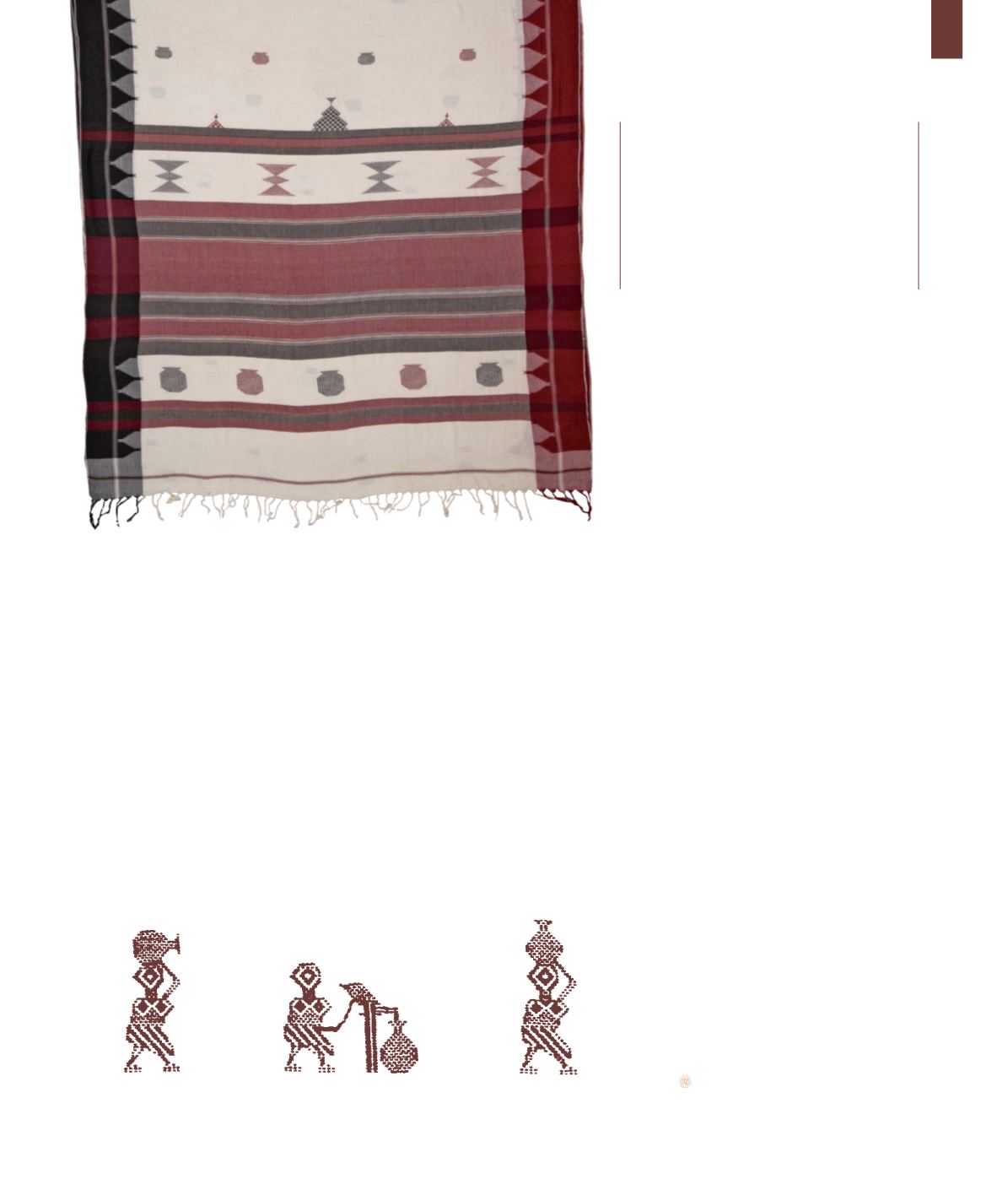
113
produce textiles that would be finer and more
suitable for the urban market. I attended
a workshop in natural dyes conductedby
Aranya, that was organised atthecraftvillage
of SudarshanSahoo, in Bhubaneswar. This
was followed by another training programme
atMRA CentreinPanchganiforpersonality
developmentand bonding of craftspersons
witheachother. The third programme I
attended was Manthan meaning ‘churningthe
mind’ at Lonavala,nearPune in Maharashtra,
India; itwas adesigninputworkshopforcraft
members.The fourth programme was on
packaging,pricingandcostingorganisedatthe
NationalGalleryof ModernArtinMumbai
inFebruary2003.The training and inputs
received at these programmes opened my
mind to the potential of our traditional weave
and we produced a variety of textiles – sarees,
shawls, dupattas, stoles and scarves – woven
with naturally-dyed yarns that were finer. These
were appreciated and the sales of my textiles
increased considerably.
Today, my two sons Raju Mohonto and
Rushi Mohonto weave textiles with naturally-
dyed yarn in the traditional ethos. They have
undergone three months training at The
Handloom School at Maheshwar, Madhya
Pradesh, where they learnt about designing
new textiles. Their weaves have been greatly
appreciated by buyers and have brought us
immense benefit. I am truly thankful for our
traditional craft and for the support received
from Paramparik Karigar. Our family is
continuing the process led by our ancestors for
over a century and by God’s grace we now live
in peace.
In 2001, we participated in one of the first
exhibitions of Paramparik Karigar held at
Coomaraswamy Hall at Chhatrapati Shivaji
Maharaj Vastu Sangrahalaya, Mumbai. It was a new
experience for me to be in Mumbai and interact
with customers from the city. I was disappointed
that after the effort of bringing our hand-woven
sarees and scarves, they were not appreciated
by the customers. This was on account of the
thickness of the textile.
However, the members of Paramparik Karigar –
Roshan Amma, Sitaben, Nanavati didi, Ratna didi
and Reshma didi were very kind and encouraging.
They showed me a variety of sarees in different
stalls and arranged for training so that I could
The training and inputs received
at these programmes opened
my mind to the potential of
our traditional weave and we
produced a variety of textiles
woven with naturally-dyed
yarns that were finer.


